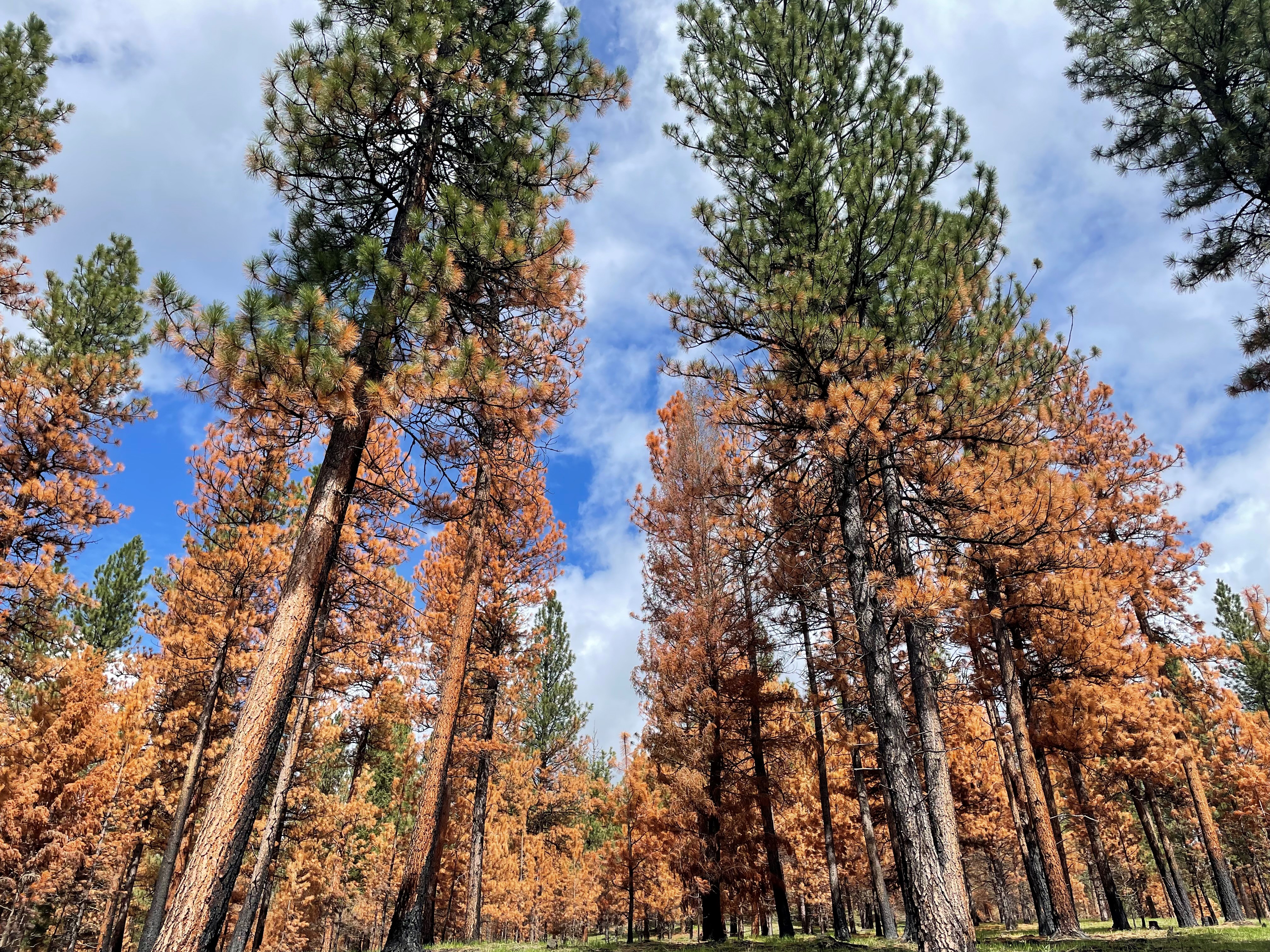We know surprisingly little about how burning impacts the health of trees that survive fire. Can fire increase water availability and growth for surviving trees by reducing forest density? Or do the fire injuries that a tree sustains override any potential benefit? Answering these questions can help us understand the post-fire recovery timeline and tree susceptibility to post-fire drought. To understand how fire injuries and changes in water availability interact to influence post-fire drought stress and tree growth, we followed ponderosa pine and Douglas-fir before and after fall 2022 and spring 2023 prescribed fires, and at two adjacent unburned sites in western Montana. We quantified fire injury (crown scorch, cambium kill), changes in tree density, changes in tree carbohydrate stores (important for post-fire recovery), and drought stress over the first two growing seasons post-fire. Our preliminary results indicate that fire injuries and their effects on tree function may outweigh any benefits from reduced forest density in the short-term, particularly when burning does not greatly reduce tree density. We found that burned trees had depleted carbohydrate stores relative to unburned trees, and were often more drought stressed, possibly due to a lack of reserves to maintain fine roots used to access soil water. Fire injuries were also strongly related to post-fire growth declines, particularly for the fall-burned site where fire intensity was greatest. However, growth showed signs of recovery at both sites by the end of the second growing season post-fire. These results suggest that prescribed burns that do not result in large reductions in tree density likely do not decrease drought vulnerability of surviving trees, and that while growth impacts are strongly related to crown injuries, these impacts are likely ephemeral.
Join the Northern Rockies Fire Science Network on March 31st at 10am Pacific/11am Mountain for a research webinar from Charlotte Reed. Charlotte is a PhD candidate at the University of Montana studying how fire impacts tree physiology and drought susceptibility in western Montana conifers
Related Documents from the Research and Publications Database
Recording(s)
Event Details
Mar 31 2025, 10 - 11am Pacific Time
